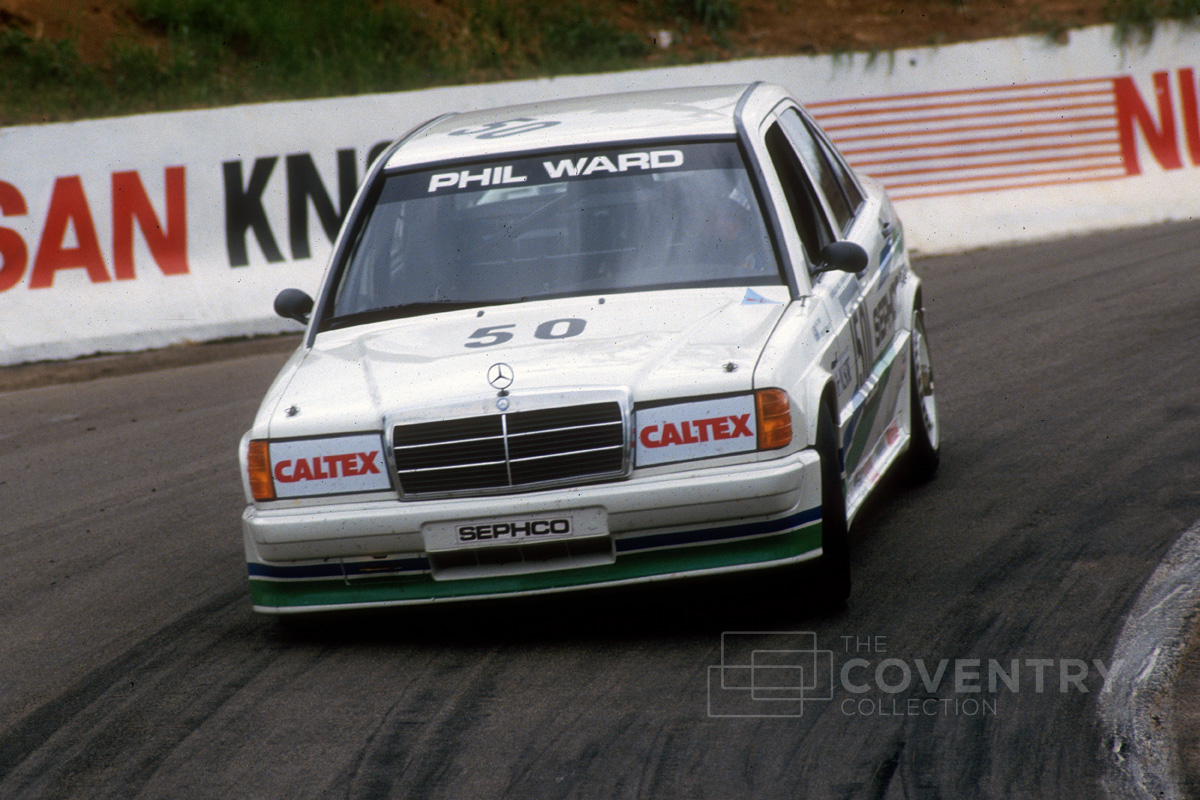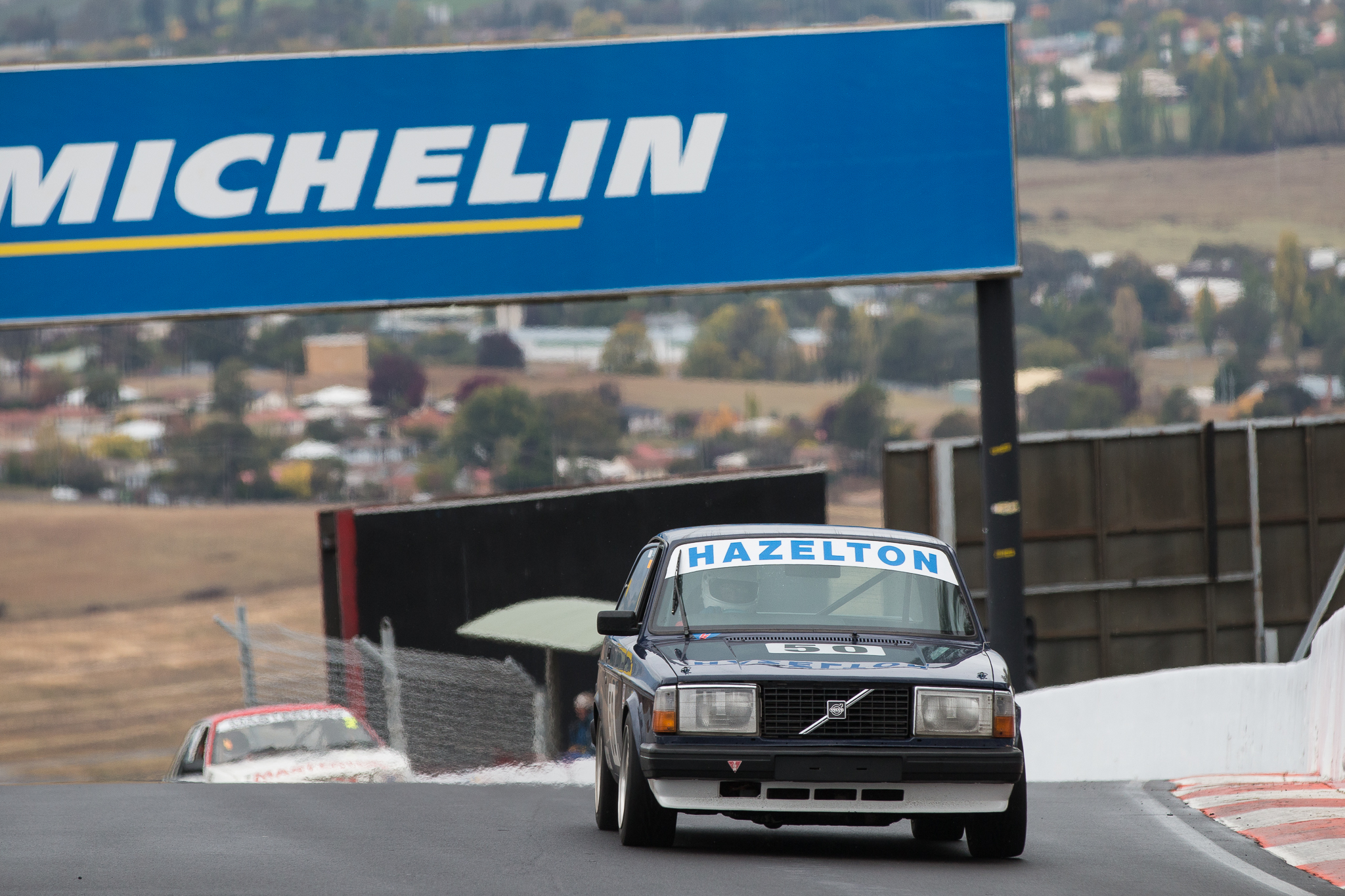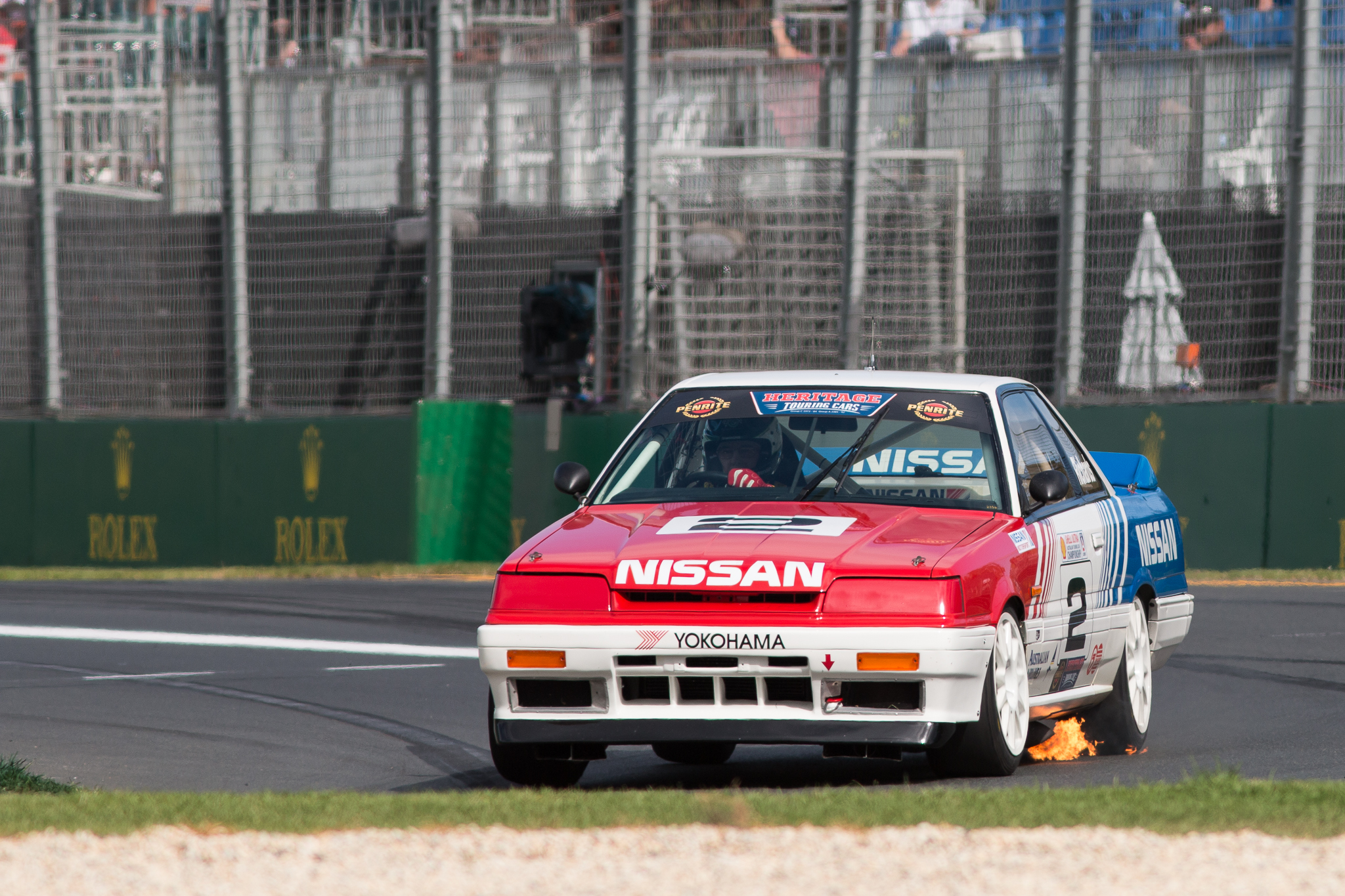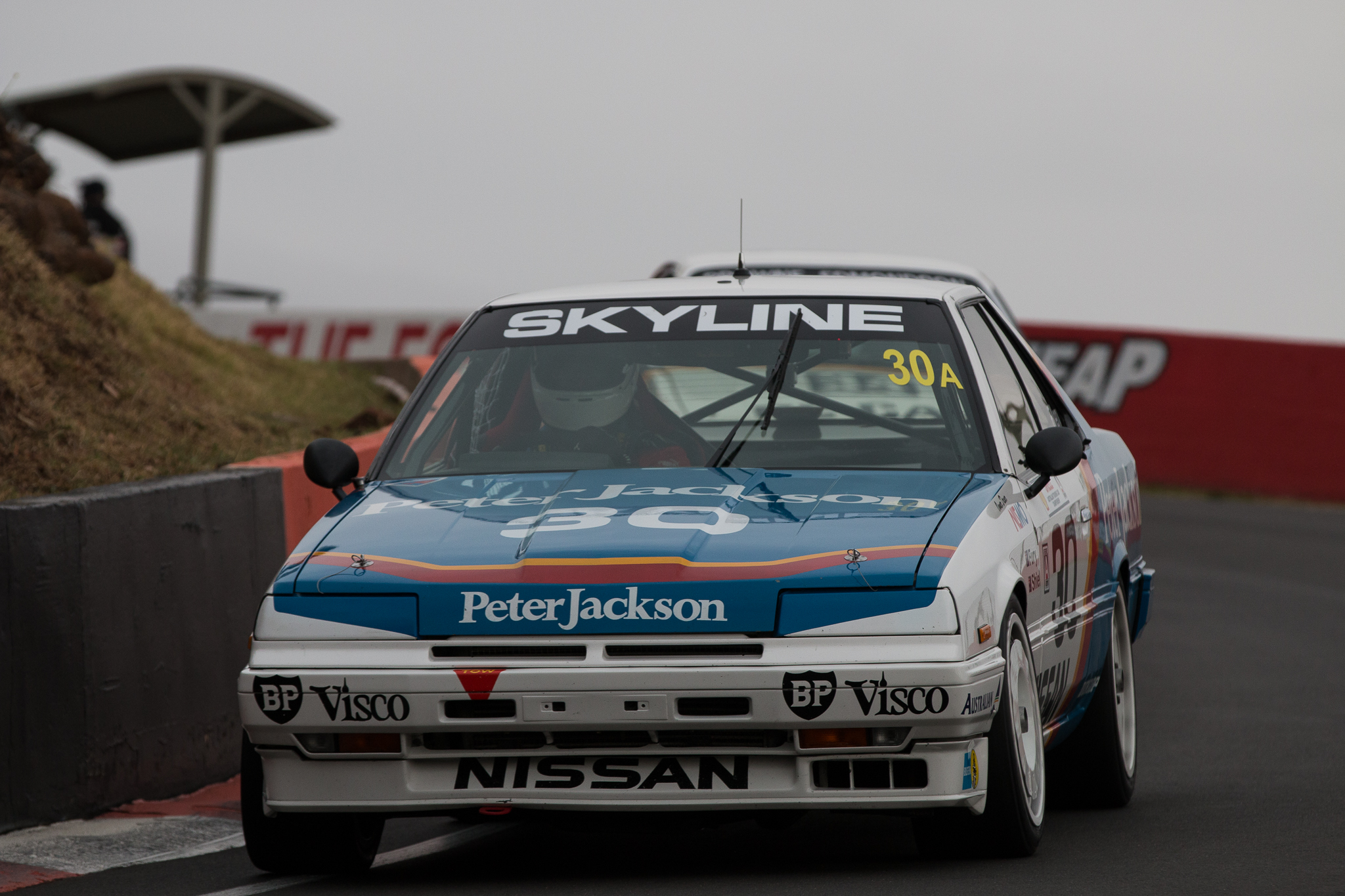When thinking about the history of Australian touring car racing, most fans think of the perpetual Ford vs Holden rivalry that has been waged for around half a century. However, there once was a time when this rivalry was overshadowed by an invasion from Europe and Japan. Although brief, it was a period that shaped Australian motorsport for the next two decades.
In the second part of our feature looking back to the Group A international touring car era and what today’s teams and manufacturers will face when looking to maximise the opportunity of Gen2, we focus on the other three manufacturers that helped write the history of Australian touring car racing.
NISSAN
The latter years of Nissan’s Group A assault is well documented but the first few years are often overlooked. With no presence in 1985, the Peter Jackson team debuted the turbo 4-pot DR30 Skyline, driven by George Fury, Glenn Seton and Gary Scott. Fury was able to win five rounds out of ten that year, more than eventual championship winner Robbie Francevic, but suffered two retirements, coming second in the championship by just five points. In 1987, Seton and Fury were joined by Tasmanian John Bowe at Peter Jackson Nissan Racing. Their season got off to a good start with Seton winning round one at Calder Park and Fury winning round two at Symmons Plains. Seton racked up another two victories in the year at Barbagallo and Sandown, taking the title fight to Jim Richards in his BMW M3. The two collided in the final race at Oran Park, giving Richards the championship. However, the Skyline and Seton were immortalised at Bathurst that year when on a wet track with slick tyres, viewers rode onboard the Nissan thanks to Channel 7’s Racecam. What followed was four minutes of sideways driving brilliance, making those moments some of the most memorable in Bathurst history. For 1988, the team upgraded to the new HR31 Skyline, powered by the straight six RB20 turbo as well as adding young gun Mark Skaife to the team. Only five rounds were run by the team, hampered by unreliability issues. Their best result was a third place for Fury at Sandown, a disappointing season given the previous pace of the DR30. Better results followed in 1989 when Fury won at Winton and Seton/Skaife won that year’s Sandown 500 endurance race. Things only got better in 1990 when Jim Richards joined Mark Skaife to pilot the team’s two cars. Richards won two rounds (Amaroo, Winton) in the HR31 and one at Oran Park in the all-new, all-wheel-drive R32 GT-R. Skaife debuted the new weapon at Mallala and quickly moved to the lead of the race before a broken hub put him out of the round. Out of the nine rounds of the championship, Richards and Skaife won seven in 1991, easily securing the championship for Nissan yet again. The pair also won the year’s Bathurst 1000. The Sandown 500 was won by a R32 GT-R but in the hands of privateers Mark Gibbs and Rohan Onslow. For 1992, the Skylines were given a 50kg ballast penalty as well as turbo pop-off valves, restricting boost and therefore power. However, this did not affect their pace as Skaife went on to win four out of the nine championship rounds, giving him his first of five championships. After the championship year had finished, a further 100kg was added to the Skylines to slow them down. The Skaife/Richards combination teamed up yet again for the Bathurst 1000, winning in extremely controversial circumstances when the race was red-flagged due to torrential rain. Richards was caught out on slicks and hit the wall at the top on the mountain as well as coming out of Forrest Elbow. Due to the count-back rule, they were given the win. The GT-R’s final racing appearance was at the 1992 Australian Grand Prix Support race where Richards won, ending the reign of the mighty Godzilla.
VOLVO
The presence of Volvo in the ATCC was short, fast and anything but simple. Entered into the 2001cc to 3000cc class of 1985, Kiwi Robbie Francevic drove a turbocharged Volvo 240T. The 240T made history in round three at Symmons Plains by becoming the first turbocharged car to win under the new Group A regulations. Francevic also became the first non-Australian resident to win an ATCC race as he was still living in Auckland, New Zealand at the time. Despite having two DNF’s in the year, Francevic was able to take the Volvo to fifth in the championship after winning the final round at Oran Park. This meant the Volvo was highest in its class, giving the team confidence going into the next season. For 1986, the Volvo Dealer Team decided to field two cars: one for Francevic and one for John Bowe. Their campaign got off to a blinding start when Francevic won rounds one, two and four (Amaroo, Symmons Plains, Adelaide International Raceway) as well as scoring podium finishes at rounds three, five and six (Sandown, Barbagallo, Surfers Paradise Raceway). However, a retirement at Calder Park and the growing speeds of George Fury’s Nissan took the battle to the last round at Oran Park. Despite a win for Fury, Francevic’s sixth place was good enough to secure him the championship by just five points. Drama followed Volvo after the season ended when Francevic and team manager John Sheppard had a falling out. At the Sandown 500, Francevic refused to drive the car, which he deemed as uncompetitive given the team had missed practice to finish building it. The day after the race, he was fired by Sheppard, leaving him without a drive for 1987. At the end of 1986, Volvo withdrew from global motorsport, forcing the closure of the Volvo Dealer Team. The Volvo driven by Richard Prince pictured in the slideshow was driven by Laurie Hazelton in 1987 in the Castrol Clash at Oran Park. The car was reportedly crashed into the pit wall, injuring an ABC cameraman.
MERCEDES
Mercedes’ Group A campaign in Australia was largely unsuccessful. The weapon of choice from 1988 was the 190E with a Cosworth tuned engine. Campaigned by Phil Ward, it was entered into the B class, competing against BMW M3’s, Alfa Romeo 75’s and Mitsubishi Starions. The car couldn’t keep up with the competition, not scoring any victories in either 1988 or 1990. For 1991, Ward only raced in the Australian Endurance Championship and at the Formula 1 support race.
2017 Plans
Moving away from its V8 bedrock to allow new engine configurations and body styles, V8 Supercars hopes its Gen 2 regulations will entice new manufacturers to join the championship and encourage its current teams and manufacturers into staying with the category for 2017 and beyond. There are multiple options for each manufacturer if they want to stay in the series after the introduction of the new regulations. Existing manufacturers Nissan, Ford and General Motors all have V6 turbos competing in either GT3 or United SportsCar competition that could be used in Gen 2.
There have been concerns over how much longer Mercedes will stay in the category as Erebus Motorsport does not receive financial support from Mercedes-Benz directly. Again, it is likely that they will stay with the V8 motor or utilise a 4 cylinder turbo unit.
For Nissan, they have a large assortment of engines and platforms to choose from. While they have a wide range of cars available for use in the category, it will most likely go down to either the current Altima or the almighty GT-R. V8 Supercars reporter James Phelps claims that Nissan will stick with the V8 powered Altima given the inroads that Nissan Motorsport is making this year. However, they could either retain the current VK56DE V8 engine (also used in their GT1 spec GT-R) or the VR38DETT 6 cylinder twin turbo unit that is used in Nissan’s GT3 GT-R’s.
While Volvo has a large assortment of cars and engines it could field, the brand’s commitment to motorsport is shaky at best. While massive gains and progress was made last year, Volvo’s performance this year has been sub-par. This, combined with Volvo recently buying 100 percent of Polestar, will certainly throw a cat amongst the pigeons come 2017. Garry Rogers will have to refine his Swedish if he’s going to beg with the company to get more long-term support.
The new regulations will also entice new manufacturers to join in the championship. Lexus has already declared interest, most likely fielding their new RC F coupe. BMW may join given they have a very strong straight-6 turbo in both the M3 and M4 as well as proven 4 cylinder engines that have been used in the British Touring Car Championship. Even Hyundai has been heard whispering about entering the category after its recent WRC campaign proved a success.
Reports have emerged that V8 Supercars is planning on running a 850-horsepower prototype V6 engine in a V8 Supercar chassis at Bathurst this October, as a demonstration to show off the possible future of the sport at the biggest event of the year.
With all of this in mind, 2017 can’t come quick enough as the Gen 2 regulations will hopefully provide a level and depth of competition that has not been seen since the Group A times. While a few key drivers have already been signed beyond 2017, the new formula will no doubt entice many other drivers and makers to stick around to see in the changed regulations.




